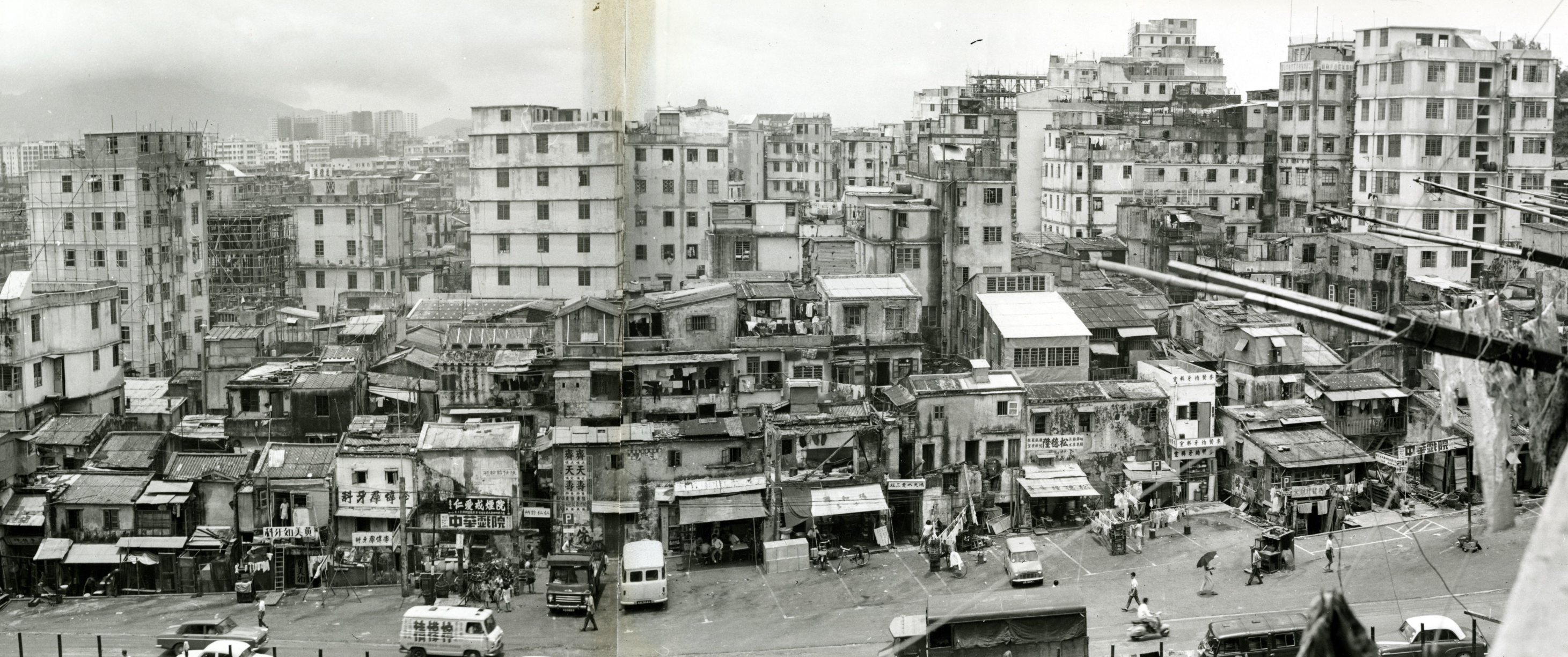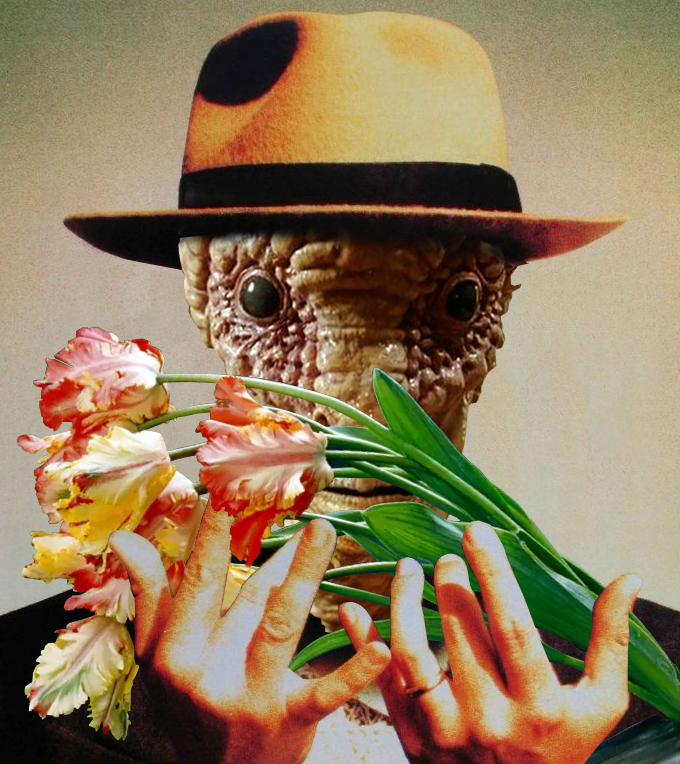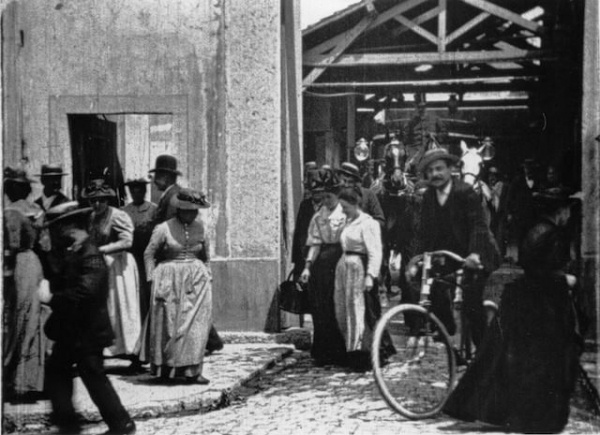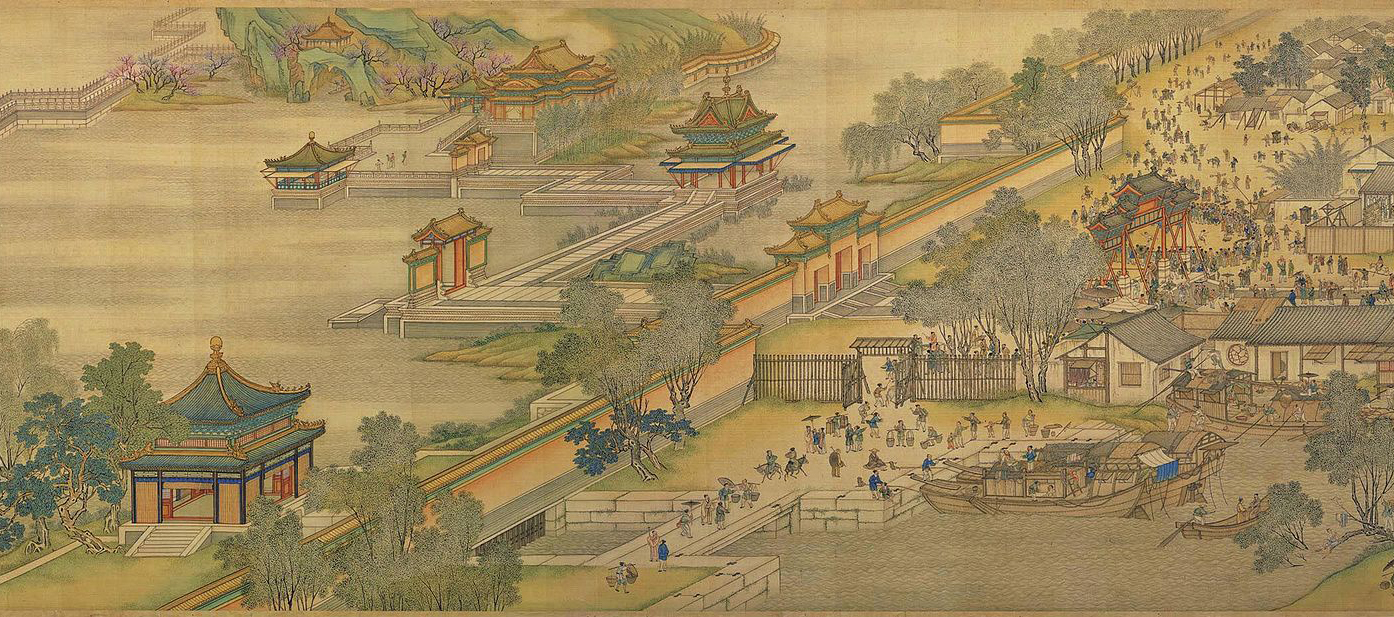
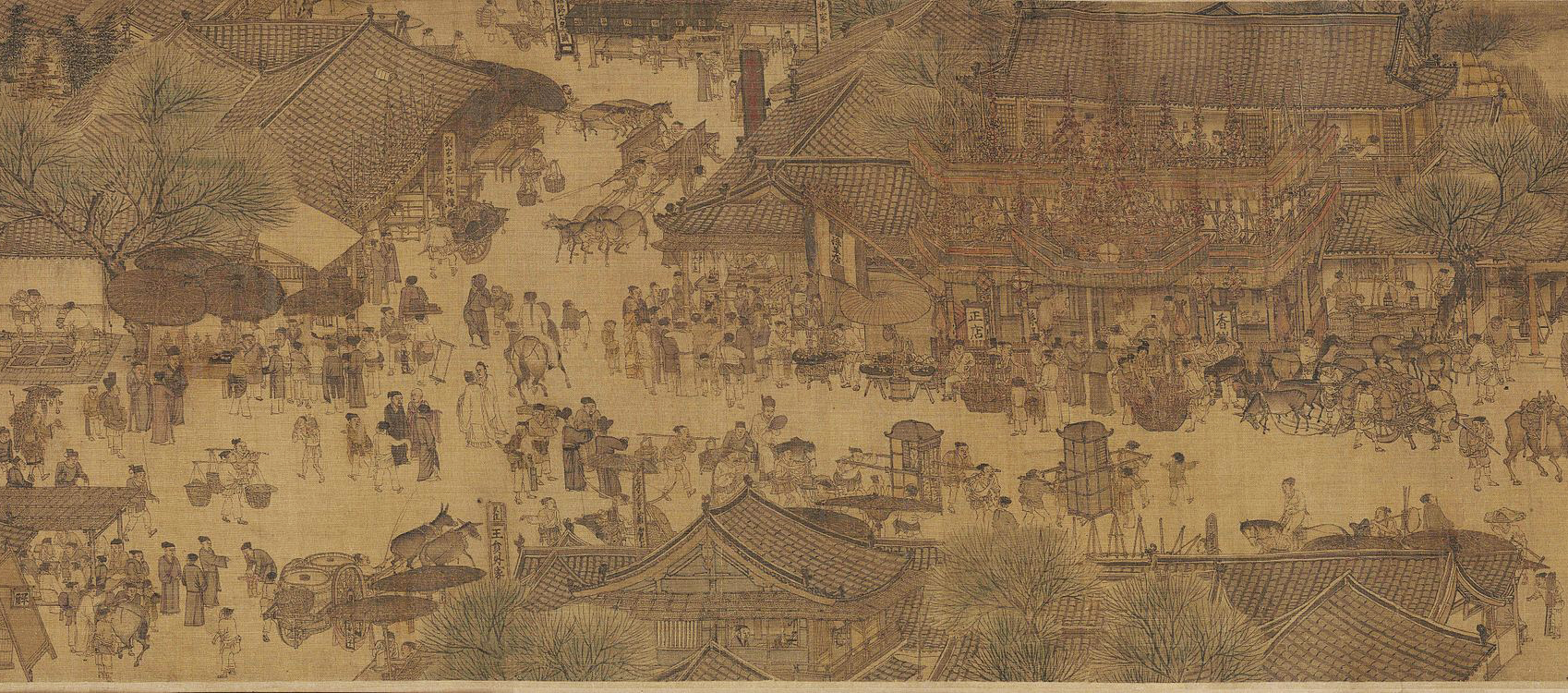
research + exhibition
Living Atlas of Community Activism
The Cambridge Room, 03/2025 - present
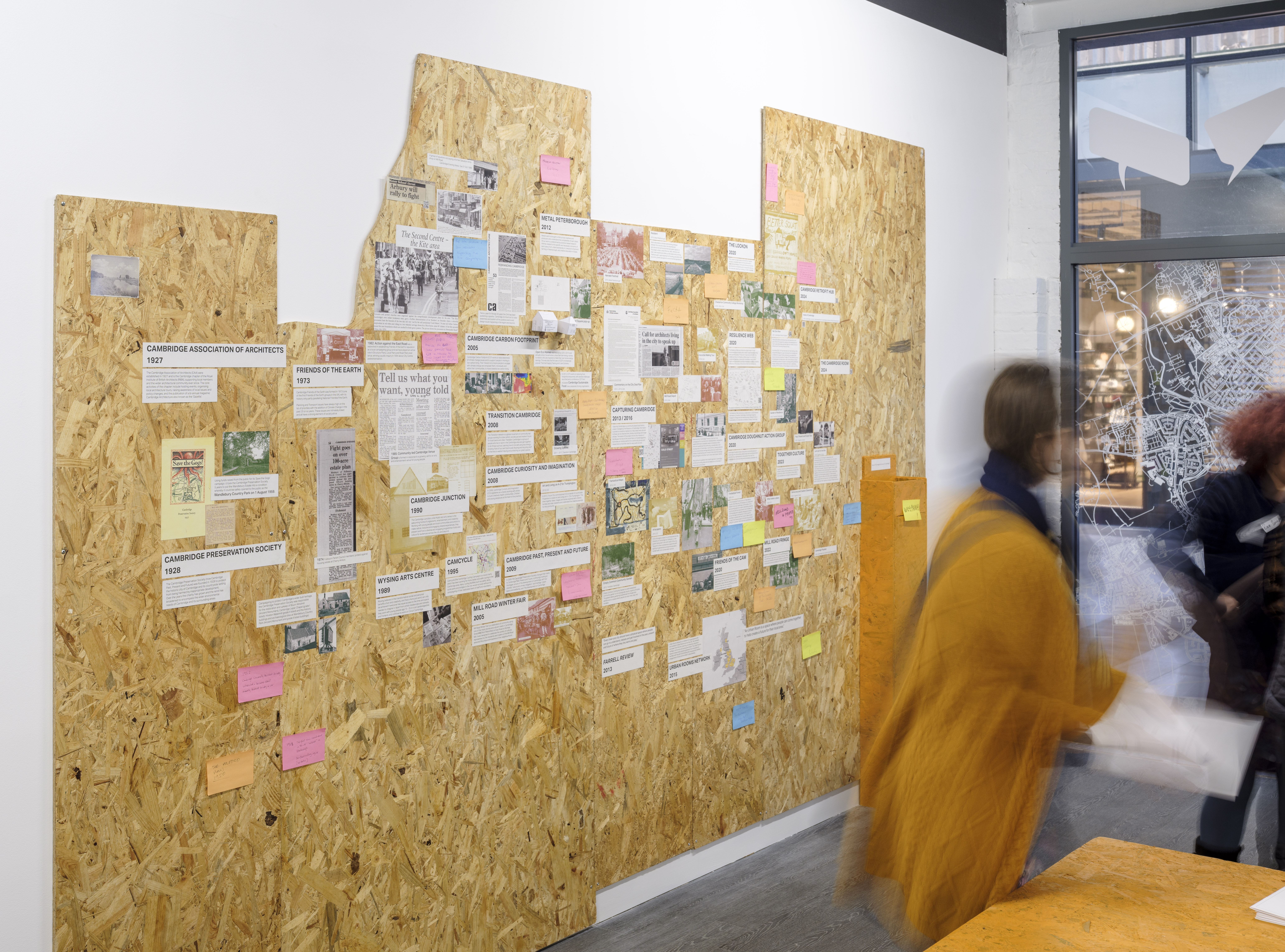
Living Atlas in the Cambridge Room pop-up space, photo by Matthew Smith
‘Living Atlas of Community Activism’ looks at the (hi)stories of city-making in Cambridge from the perspective of local community groups. This timeline is not a linear record of organisations or a counter-narrative to top-down planning; instead, it maps the forces, actors, networks, and dialogues that have shaped the city in different ways. The Atlas is displayed in the Cambridge Room and invites visitors to add further groups and projects.
research
Location, Imagination, Transformation:
現場、想像、重塑
Grassroots Urbanism & Hong Kong Urban Cinema
Design Trust Hong Kong, 10/2024 - 07/2025

“Location, Imagination and Transformation” is a cinematic urban topographical survey of everyday practices by the grassroots in contemporary Hong Kong. The project explores the cinematic representations of these informal spatial practices, their sites and interrelations, as well as their external relations with the ever-changing built environment. Through a series of architectural drawings, (cinematic) urban mappings, participatory photography, and analyses of varied layers of narratives in both real and reel cities, this project illustrates the complex nature of placemaking as an outcome of collective actions of building, dwelling, appropriating, resisting, reclaiming, negotiating, and caring. The project is therefore attempting to reveal and expand a shared understanding of urban discourse in Hong Kong that transforms the material environment into a “lived” space, constructed by and accommodating all inhabitants in the city.
See more details in the booklet.
See more details in the booklet.
workshop
Liverpool-manchester, 05/2024 - 08/2024
![]()
participatory mapping workshop, photo by Greg Hodge
Planting and Placemaking:
Mapping and building a knowledge co-production network of community-based railway gardens between Liverpool and Manchester
Liverpool-manchester, 05/2024 - 08/2024
participatory mapping workshop, photo by Greg Hodge
Funded by the University for the Creative Arts, the aim of this Planting and Placemaking project (PPP) is to mobilise collective knowledge on railway gardens, in order to form a knowledge co-production network that brings together local community groups, gardeners, researchers, artists and cultural organisations along the Liverpool-Manchester railway. We want to examine the notion of ‘plurality’ in the formation of railway gardens, and how they have become a vital community space through the process of placemaking.
See more details in the booklet.
See more details in the booklet.

exhibition
Red-River Cultural Art Museum, Beijing, 2023
![]() ‘Traces Under the Surface’, RRCAM (Beijing), 2023
‘Traces Under the Surface’, RRCAM (Beijing), 2023
![]()
![]()
![]()
stills from the same-titled film (2022), shot by Qiyang Zheng
Traces Under the Surface
Red-River Cultural Art Museum, Beijing, 2023
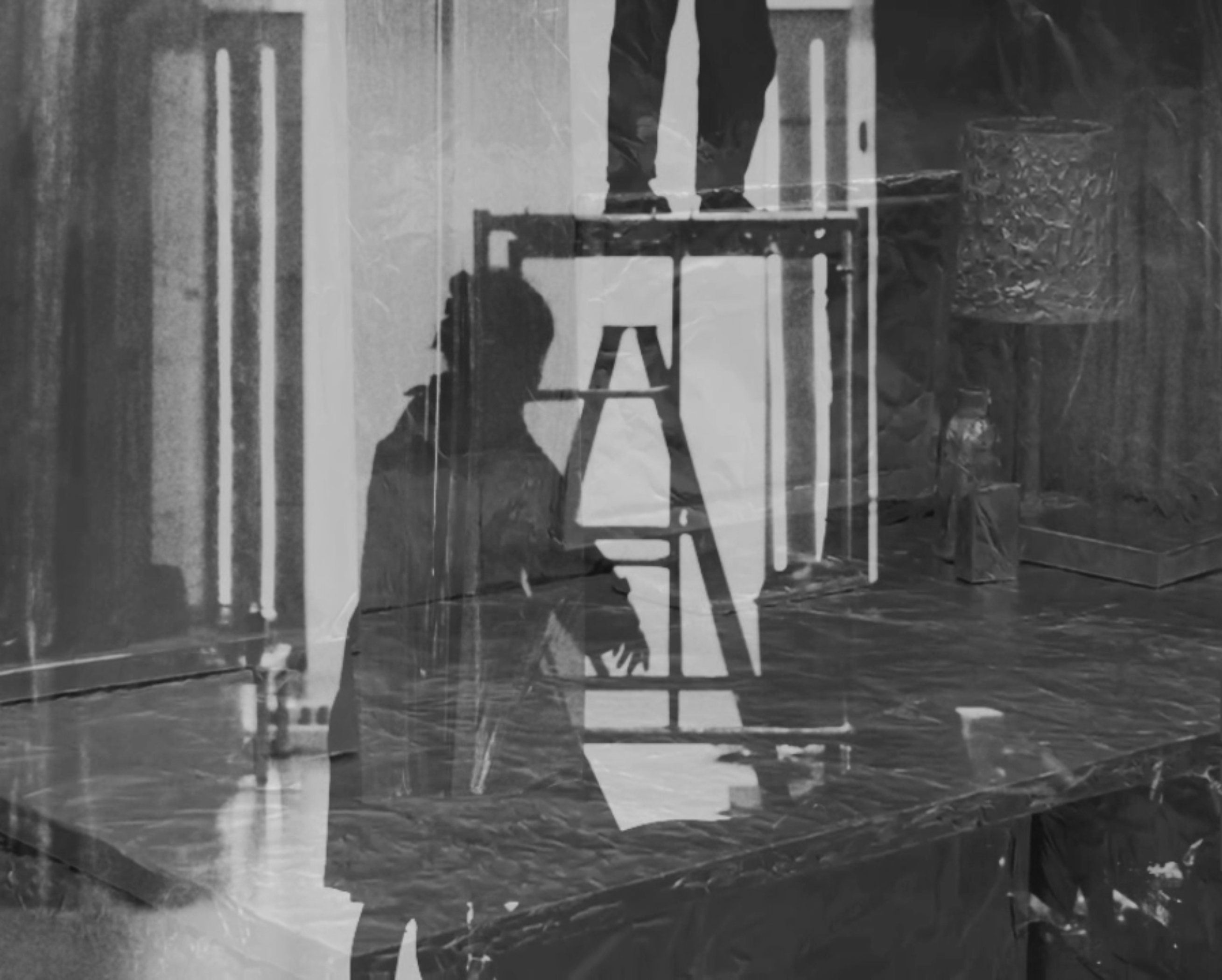

stills from the same-titled film (2022), shot by Qiyang Zheng

initial concept, 2022
‘If we did not know before that we share the surfaces of the world, we do now. The surface that one person touches bears the trace of that person, hosts and transfers that trace, and affects the next person whose touch lands there. The surfaces differ. Plastic won’t bear the trace for long, but some porous materials clearly do. Something human and viral lingers briefly or longer on a surface that constitutes one material component of our common world.’
- Judith Butler
exhibition
Nigüelas (Granada), Spain, 2022
Entre las Flores
Nigüelas (Granada), Spain, 2022
Fran and I delivered this exhibition of my mother’s paintings in Nigüelas. My mother self-learnt two different techniques of traditional Chinese paintings after her retirement, and what I found beautiful is the space/aura created in her works. As a former Chinese literature teacher, her interpretation of literati paintings seemed to be seamless.

residency
Metal UK, 2021-2022
![]()
![]()
![]()
![]()
![]()
![]()
‘A Shifting Model of Publicness’
Metal UK, 2021-2022

How do you make a community space/hub more public and is the notion of 'publicness' shifting in a post-pandemic era? This residency with Metal UK aims to investigate the historical changes of the Edge Hill Station, Liverpool, from one of the oldest passenger railway station to the contemporary centre for communities and artists. The project discusses the changing notion of ‘publicness’ in the aspects of both public transportation (the class system) and urban space (exclusion and privatisation), to reveal a hidden model of top-down (urban) management that has been constantly challenged by local groups/communities in Liverpool.
The residency is followed by a public conversation with guests including Liverpool Art Prize (2012) winner Robyn Woolston, Mark Sidebotham from Shed KM architects, studio artist and volunteer for the regular screening night Film Station Adrian Jeans, and one half of Cinema Nation Monika Rodriguez: ‘A Shifting Model of Publicness’.
See more details at Metal UK.
The residency is followed by a public conversation with guests including Liverpool Art Prize (2012) winner Robyn Woolston, Mark Sidebotham from Shed KM architects, studio artist and volunteer for the regular screening night Film Station Adrian Jeans, and one half of Cinema Nation Monika Rodriguez: ‘A Shifting Model of Publicness’.
See more details at Metal UK.





residency
Tate Liverpool, 2020
![]()
‘Knowledge is Power’
Tate Liverpool, 2020
When we talk about urban space,
whose urban space are we talking about?
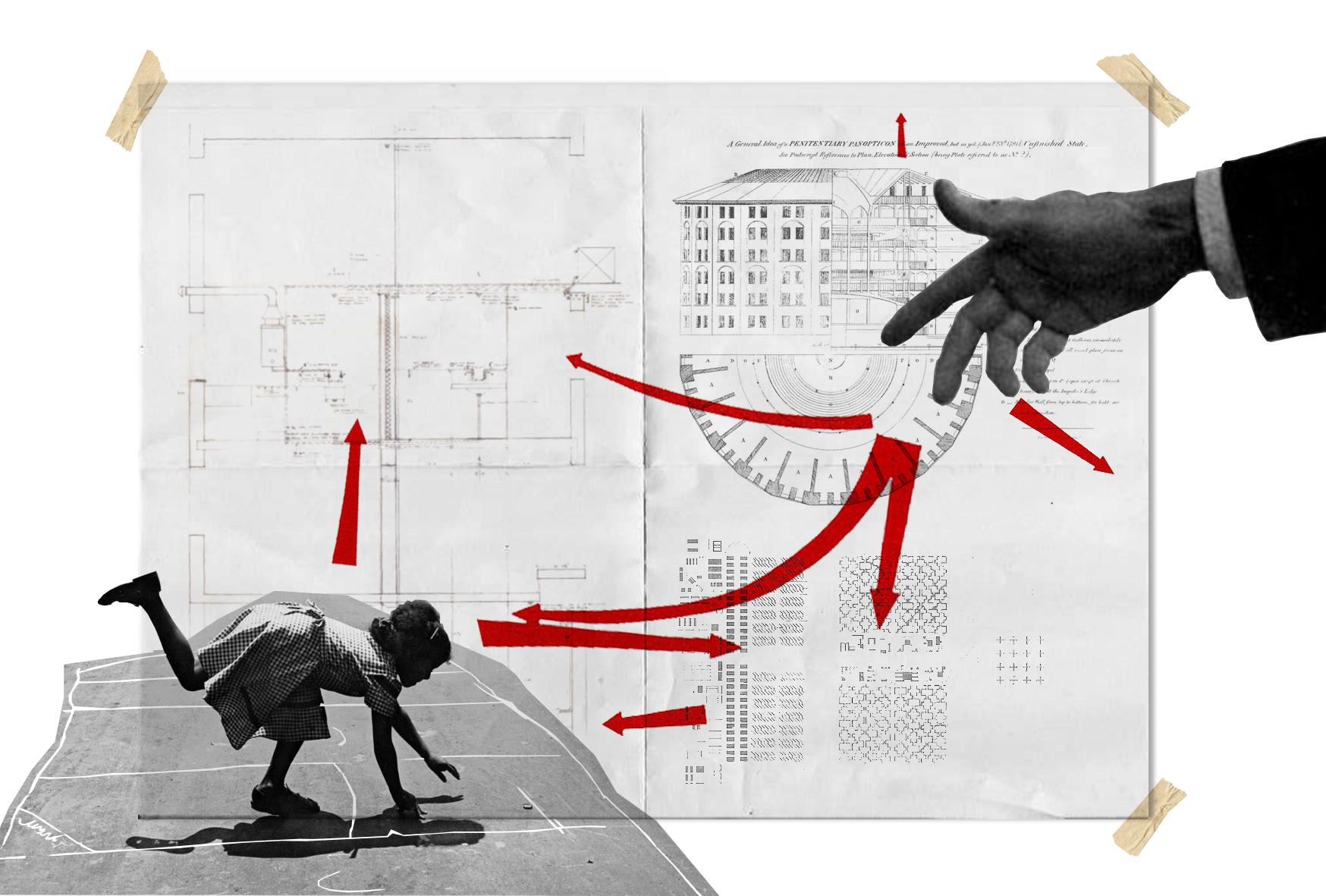
Cities are shaped by people. From
self-built settlements on the rooftops of Hong Kong to feminist graffiti and
flags under bridges, people negotiate with the city produce safe, small
territories that belong to specific groups.
It is this process of negotiation between individuals and authorities (both public and commercial) that shapes the everyday urban spaces that we choose to spend time in. Often, these places are made through the reaction and resistance of ordinary people. In this way, power is shifted from the ‘ruler’ to the people, and communities form and become stronger.
Tate: ‘Knowledge is Power’; UoL: ‘Tate Residency’
It is this process of negotiation between individuals and authorities (both public and commercial) that shapes the everyday urban spaces that we choose to spend time in. Often, these places are made through the reaction and resistance of ordinary people. In this way, power is shifted from the ‘ruler’ to the people, and communities form and become stronger.
Tate: ‘Knowledge is Power’; UoL: ‘Tate Residency’
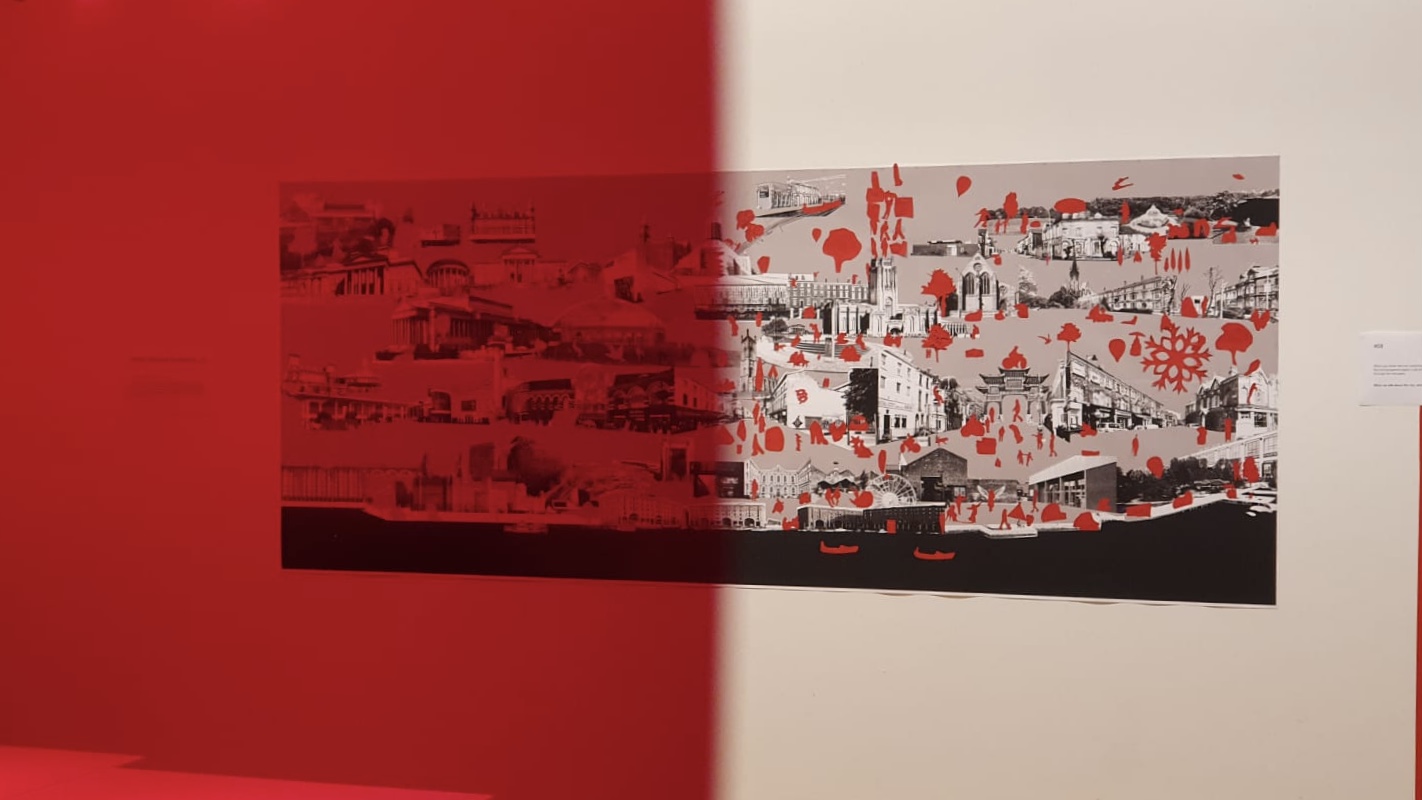
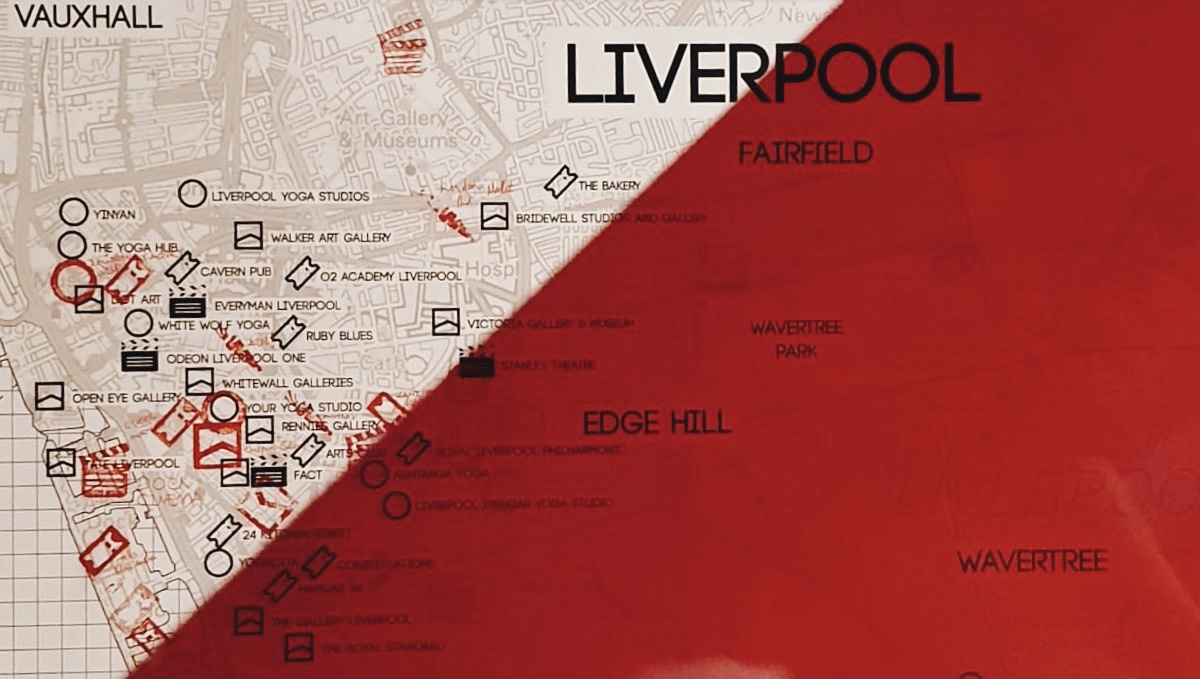
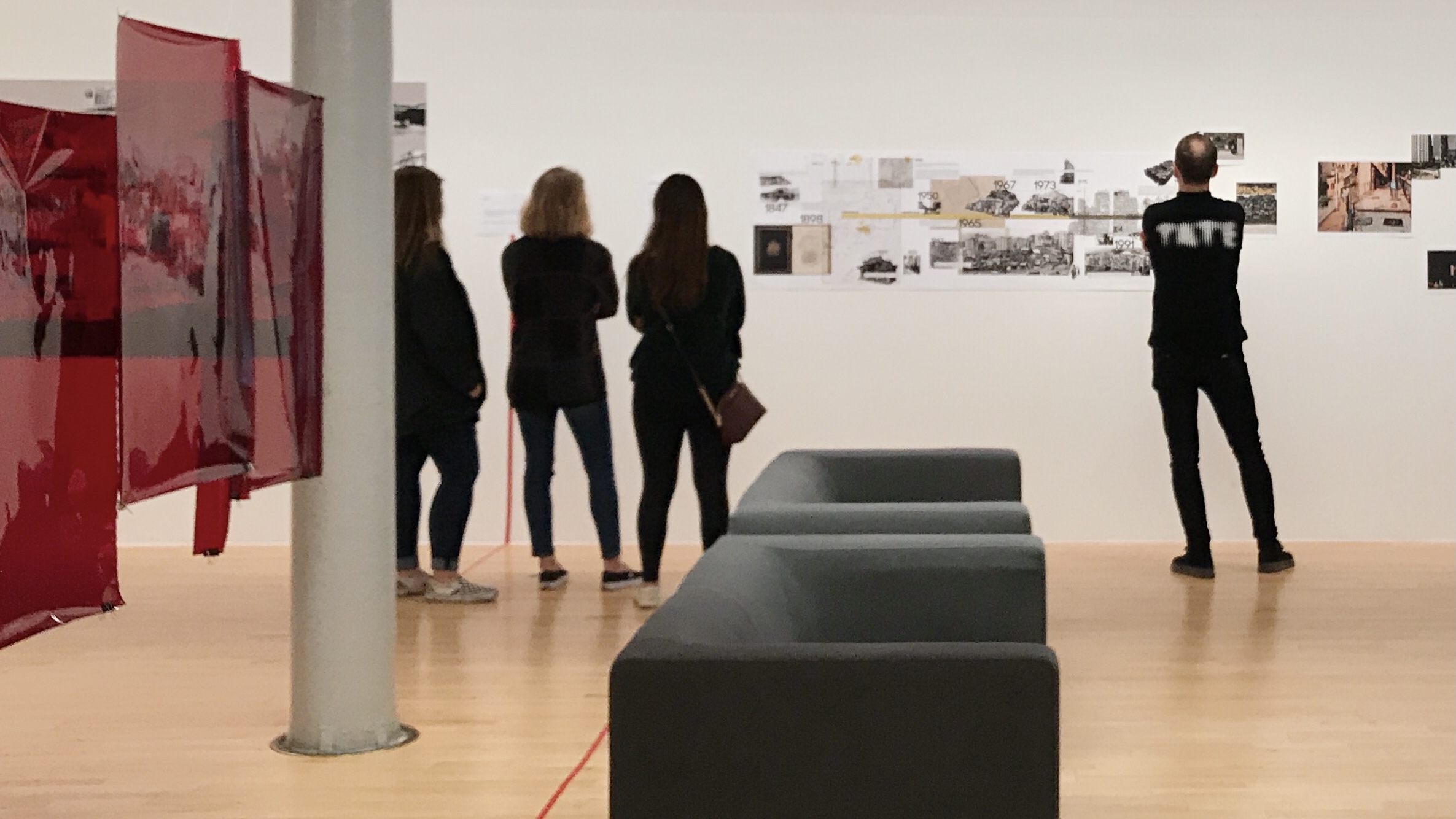
exhibition jianghu
LOOK Photo Biennial / Satellite, Liverpool, 10/2019 - 11/2019
.
![]()
![]()
jianghu
LOOK Photo Biennial / Satellite, Liverpool, 10/2019 - 11/2019
From Wong Kai-wai’s classic Ashes of Time to Jia Zhangke’s series
portraits of grassroots, ‘jianghu’ has constantly appeared in contemporary
Chinese art and literature. Jianghu (‘江湖’), firstly appeared in
philosopher Zhuang Zhou’s text, gradually implies the unruled world outside the
authoritative order and the domestic space, where people from different
backgrounds can live in their own ways without obeying the principle. With this
concept, this project tries to understand the ‘bizarre’ practices
in contemporary Chinese cities, to explore the underlying philosophy and to rethink the
relation among ordinary people, their everyday lives and the top-down power.
.



Central, Hong Kong, 2018
research
University of Cambridge, 2019
![]()
![]()
‘Made in Hong Kong’
University of Cambridge, 2019
“...the
city is presented from the angle of the underprivileged, expresses the need for
social change, detects problems from an everyday situation, and this kind representation
could help us map out a complicated formation of urban culture of Hong Kong”
This paper explores the cinematic representation of the socio-spatial (re)production of publicness in contemporary Hong Kong, through analysing series of Hong Kong city films. I argue that Hong Kong urban cinema has demonstrated a cinematic urban topography of the city and the fluid urban space engendered by everyday practices.
Conference: ‘Slices of Everyday Lives’
Conference: ‘Slices of Everyday Lives’
exhibition Gaze
OUTPUT, Liverpool, 2019
![]()
Gaze
OUTPUT, Liverpool, 2019
Through the three pieces featured in this exhibition, I have tried to explore the concept of representation (of gender, religion, emotion) by using different materials and skills.
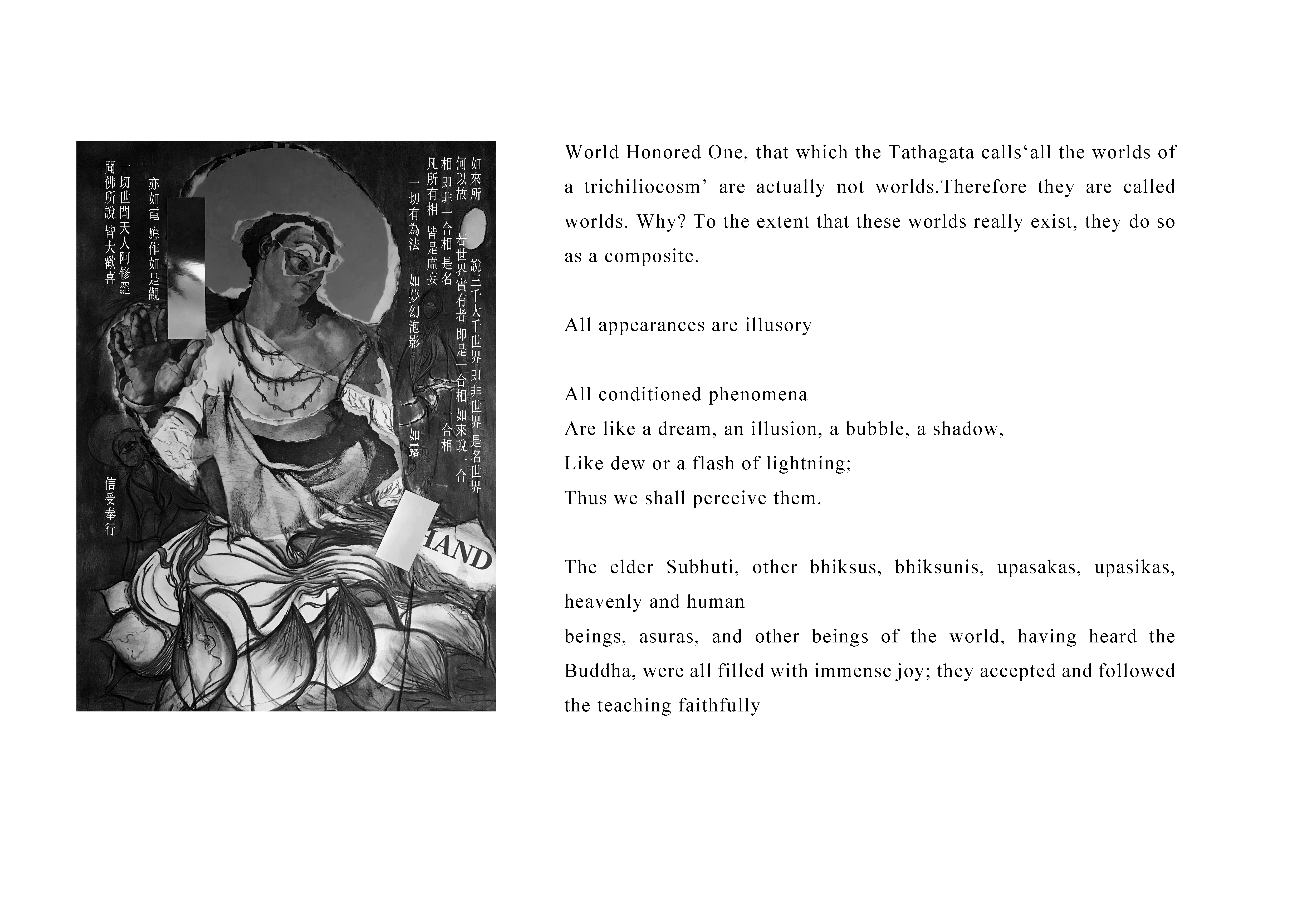
‘OUTPUT OPEN is an exhibition that brings together artists and designers all from or based in Merseyside. There isn’t a single neat theme that runs through the show - we have simply enjoyed the practices of these makers and want to showcase the great amount of creative activity that is happening locally. This year’s edition includes work by Claire Holtaway, Nneka Cummins, John Elcock, Zhuozhang Li, Paul Mellor, Gold Akanbi, Grace Edwards, Sumuyya Khader, Josie Jenkins and Sophie Green. We hope you enjoy the show.’ (Review: ‘Output Open 2: Let Quality Speak’)
research The Floating City
conference: (Re)defining the Intersection: Hong Kong Textuality,
The University of Sheffield, Humanities Research Institute, 2019
![]()
The Floating City
conference: (Re)defining the Intersection: Hong Kong Textuality,
The University of Sheffield, Humanities Research Institute, 2019
This paper explores the socio-spatial
transformation of urban spaces in Hong Kong through analysing a series of
contemporary Hong Kong films, and how these films demonstrate a cinematic urban
geography and depict the ever-changing transformation of everyday life spaces.
I argue that these socio-spatial (re)production of urban spaces reflect and
affect the ‘floating’ identity of the people and the city in terms of different
aspects, such as physical forms, social structures and psychological
comprehensions of the space.

collage art Gaia, or ‘No War but Gender War’
Liverpool, 2018
![]()
Gaia, or ‘No War but Gender War’
Liverpool, 2018
we fool ourselves that women came from men’s bone, though we were all born from females’ bodies
we simplify the women and the nature, then, we see them as materials for production
we simplify the women and the nature, then, we see them as materials for production

recycled sunset photo print from bin
residencyNow and Then
PlacEd, Liverpool, 2018
![]()
Now and Then
PlacEd, Liverpool, 2018
This workshop aims to understand the city image of Liverpool from different groups of people (mainly young people). It consists of two parts: the ‘Image of Liverpool’ and the ‘Future of Liverpool’. With asking people to create two collages based upon images/texts from newspapers and magazines, it shows people’s underneath understandings of the city in different layers (physical urban spaces, social everyday life, etc.) and their future scenarios.
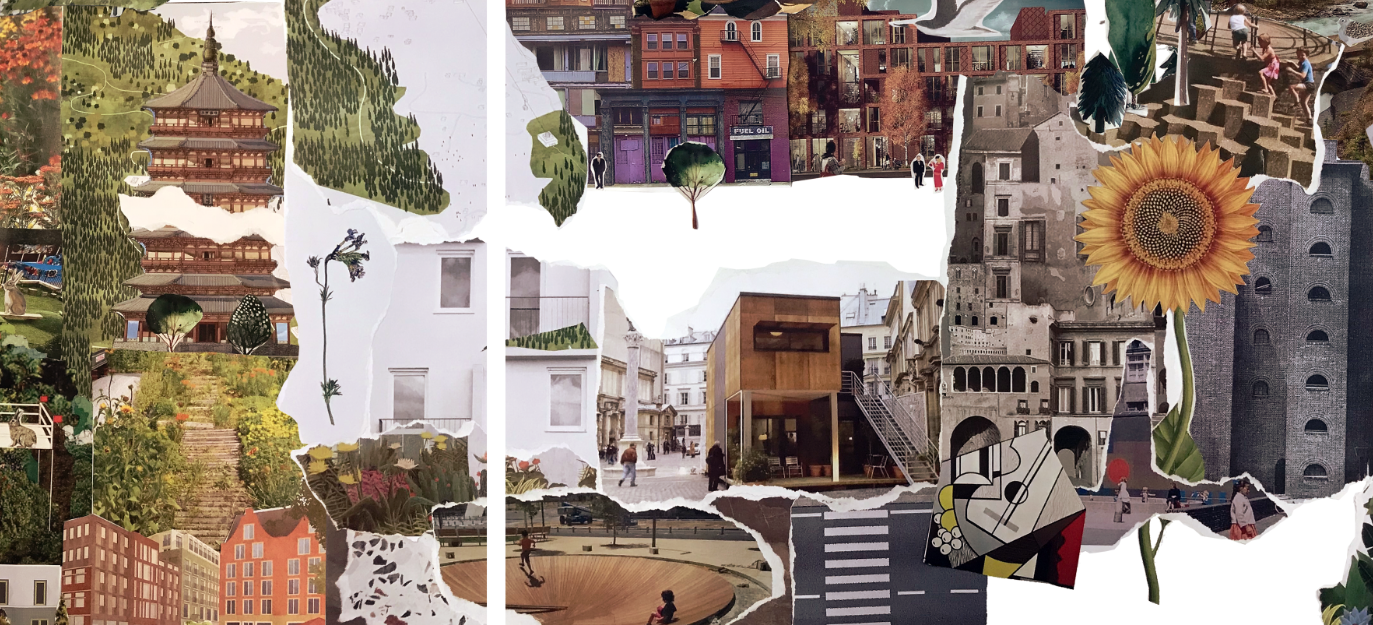
a section of the panoramic collage
publication
Till We Have Built Jerusalem: architects of a new city
[直到我们建起了耶路撒冷]
translator, Tang Keyang Studio, 2016-2018
‘The summer is rapidly drawing to a close. The latest round of fighting
has ended. More than twenty-one hundred Palestinians and seventy-two Israelis
are dead, whole Gazan neighbourhoods lie in rubble, thousands are homeless
there, and in Israel the events of the summer have been hastily buried. Life in
Jewish Jerusalem has slipped unnervingly back to humdrum routine. In Zion
Square, the protesters have vanished and been replaced by gaggles of noisy
American Jewish teenagers. Next to the bright yellow bloodmobile with a Magen
David painted on its side, a yarmulke- wearing electric guitarist plays
“Stairway to Heaven” off-key at all hours of the day. This scene unfolds right
across from the row of pinkish Jaffa Road buildings that it seems Spyro Houris
built, just outside the window of the office where he once sat and worked—but
he remains a ghost.’ (p287)
“这个夏天很快地接近了尾声。最近的一轮殴斗也已结束,超过2100名巴勒斯坦人和72名以色列人死亡,整个加沙社区遍地碎石瓦砾,数千人无家可归。而在以色列,这一夏季的事变已被迅速地忘却,犹太人身心俱疲地在耶路撒冷恢复了平乏的日常生活。锡安广场的示威者们消失散去,取而代之的是成群聒噪的美国犹太青少年。在一辆一侧涂有大卫星的明黄色采血巡回车旁,身戴犹太圆顶小帽的电吉他手一整日都在走调地演奏着《通往天堂的阶梯(Stairway to Heaven)》。这一幕展现在雅法路上那排似乎是斯派罗·扈利斯建造的粉色建筑群前,在他曾坐着并工作的那个办公室的那扇窗外——而他却已成为了一个幽灵。”
“这个夏天很快地接近了尾声。最近的一轮殴斗也已结束,超过2100名巴勒斯坦人和72名以色列人死亡,整个加沙社区遍地碎石瓦砾,数千人无家可归。而在以色列,这一夏季的事变已被迅速地忘却,犹太人身心俱疲地在耶路撒冷恢复了平乏的日常生活。锡安广场的示威者们消失散去,取而代之的是成群聒噪的美国犹太青少年。在一辆一侧涂有大卫星的明黄色采血巡回车旁,身戴犹太圆顶小帽的电吉他手一整日都在走调地演奏着《通往天堂的阶梯(Stairway to Heaven)》。这一幕展现在雅法路上那排似乎是斯派罗·扈利斯建造的粉色建筑群前,在他曾坐着并工作的那个办公室的那扇窗外——而他却已成为了一个幽灵。”
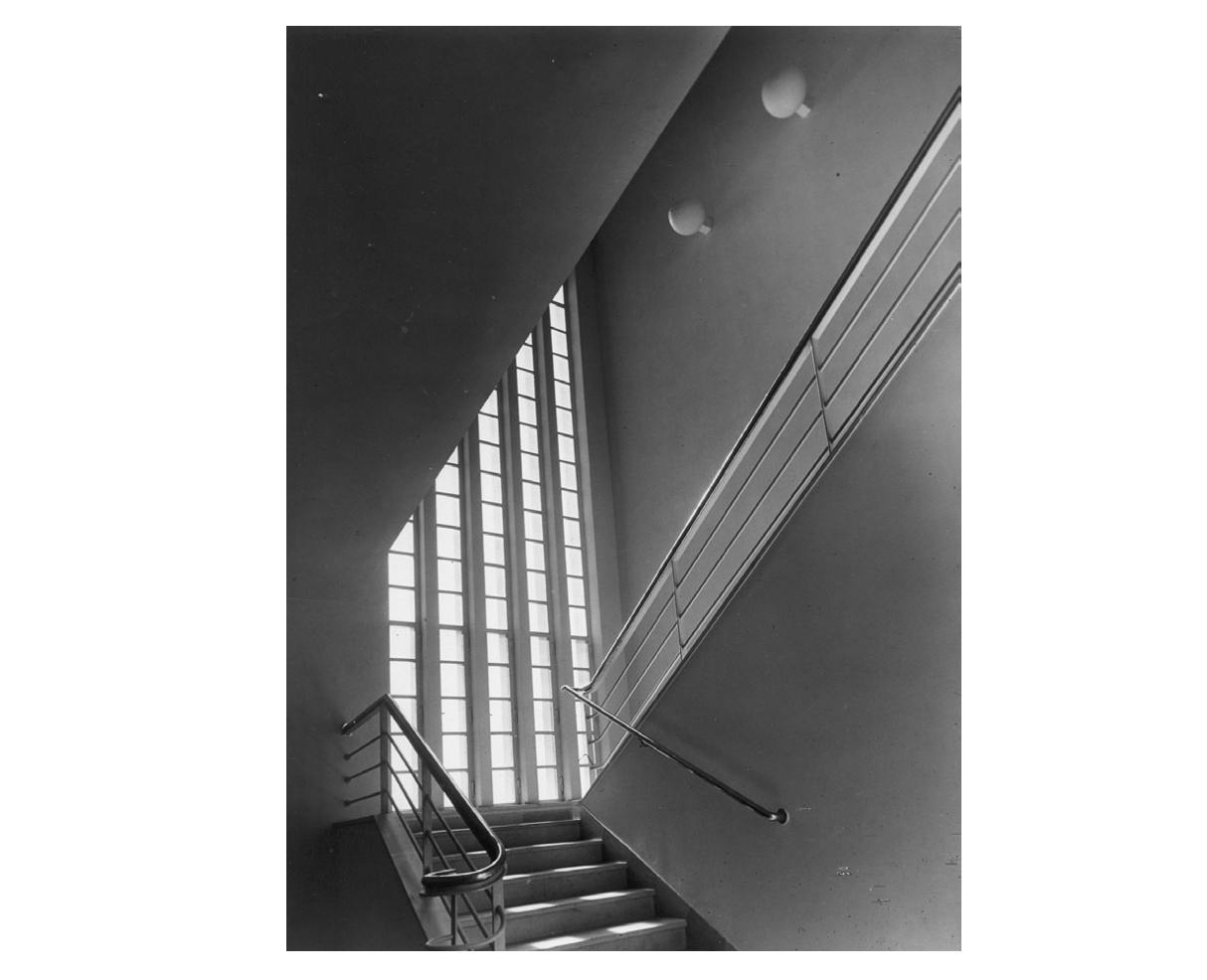
Till We Have Built Jerusalem: Architects of a New City (Chinese Edition)’, Beijing United Publishing co., LTD; 1st edition (December 1, 2017)
exhibition
Wandering Through Newspaper
curator, GAFA, Guangzhou, 2017
![]()
Wandering Through Newspaper
curator, GAFA, Guangzhou, 2017
'My room is situated on the forty-fifth degree of latitude, it forms a long rectangle, thirty-six paces in circumference if you hug the wall. My journey will, however, measure much more than this, as I will be crossing it frequently lengthwise, or else diagonally, without any rule or method.'

media writing
Paris is Burning
Did human firstly create the form of a runway platform, or the semi-circle form of ancient Greek Theatre?
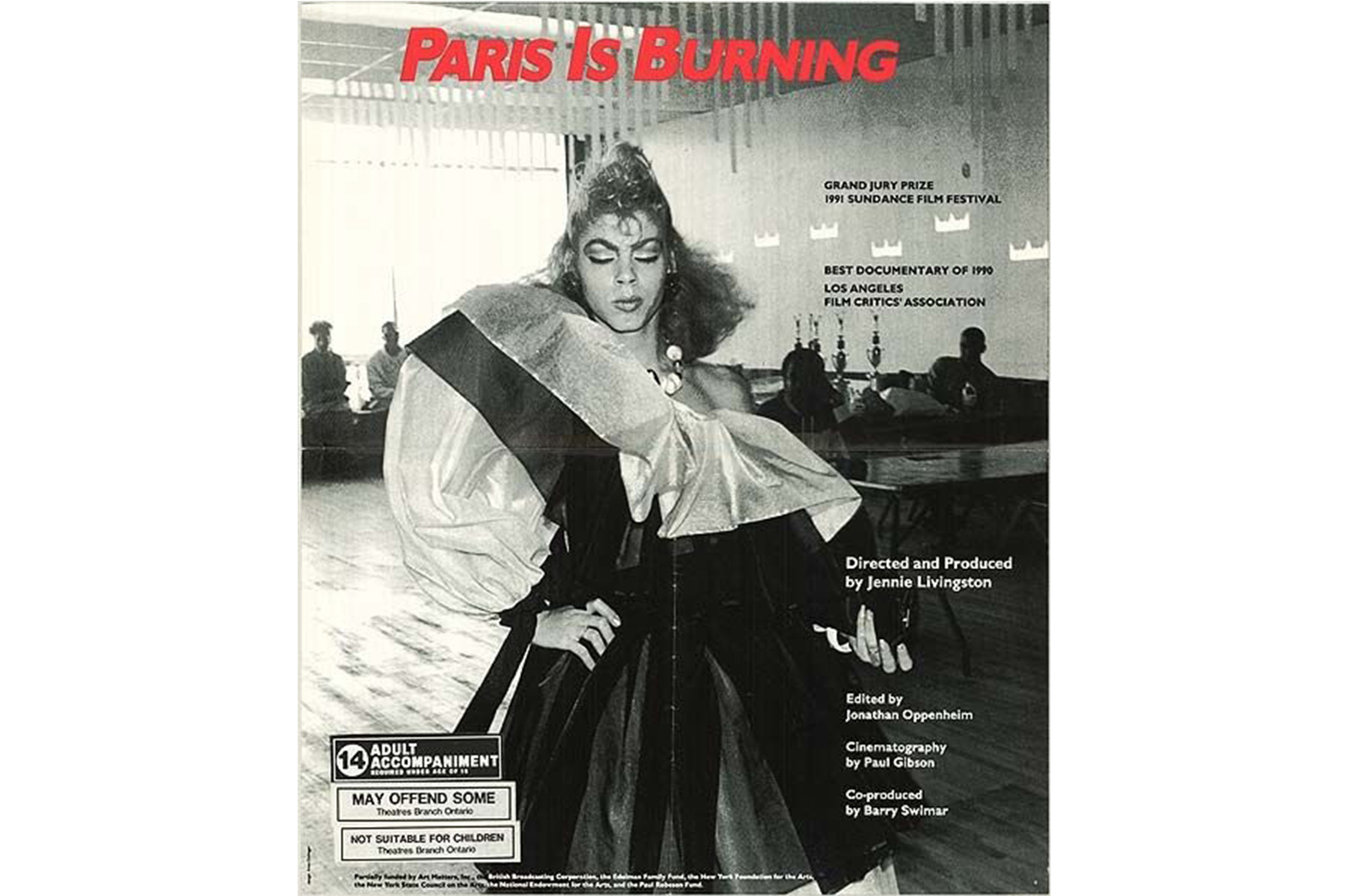
urban design
Somers Town
Urban regeneration project, London, 2015-2016
![]()
Somers Town
Urban regeneration project, London, 2015-2016
This project of Somers Town is based on research works in Studio Global Praxis, Sheffield School of Architecture. This community, which is sandwiched between St Pancras International and Euston Stations in London, suffers a fragmented social and spatial condition against its diverse cultural and social backgrounds.

urban study & design
2047
MA Thesis, SSoA, 2016
‘This metropolis is in fact no longer the expression of a society of producers but of consumers.’
‘What is needed is a shift from the passivity in which we comply with what is offered up every day, to an active posture, not so much of resistance, but of a quest.’

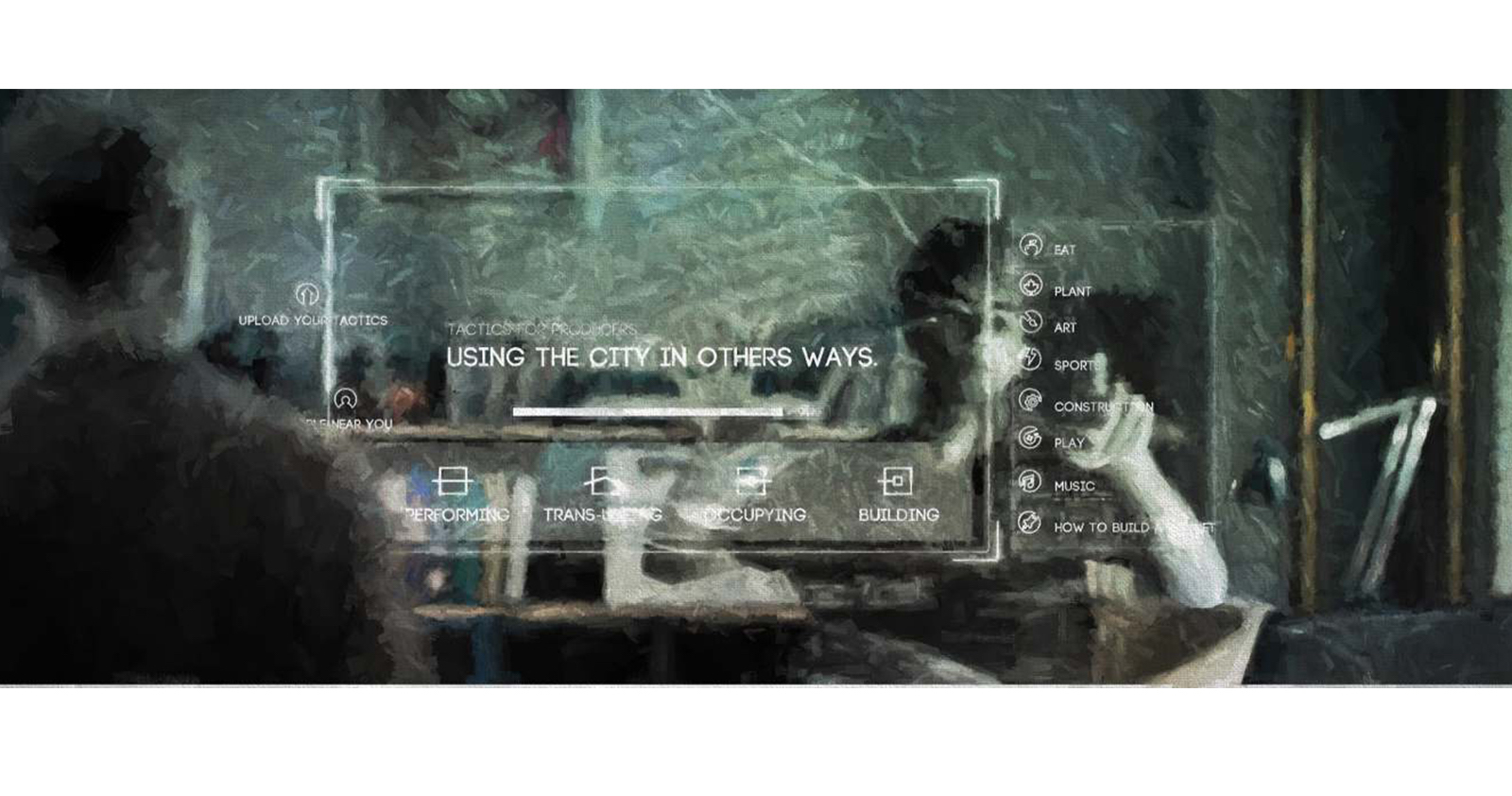
media writing
Creation of Eve
‘The cyborg does not dream of community on the model of the organic family, this time without the oedipal project. The cyborg would not recognize the Garden of Eden; it is not made of mud and cannot dream of returning to dust.’
![]()
Creation of Eve
‘The cyborg does not dream of community on the model of the organic family, this time without the oedipal project. The cyborg would not recognize the Garden of Eden; it is not made of mud and cannot dream of returning to dust.’

research
Along the Qingming River
speaker, LHAP conference, London, 2017
‘If life prevail, the city of the future will have, as but few contemporary cities have, the qualities shown in this Chinese painting… with the endless permutations and combinations that varied landscapes, varied occupations, varied cultural activities, and the varied personal attributes of men make possible. Not the perfect hive, but the living city.’
Visual materials such as paintings, photography, or cinema, could provide abundant and evident resources for us to understand the interaction of city and people in the everyday level, which could be usually, consciously or unconsciously, neglected in official documents and planning maps. In this case, those frozen moments depicted in the three panoramic scrolls have helped us to examine the historical changes of the urban milieu, and also, as you could see, it would be necessary to combine other kinds of materials during the research, including maps, documents, or literature.
Along the Qingming River
speaker, LHAP conference, London, 2017
‘If life prevail, the city of the future will have, as but few contemporary cities have, the qualities shown in this Chinese painting… with the endless permutations and combinations that varied landscapes, varied occupations, varied cultural activities, and the varied personal attributes of men make possible. Not the perfect hive, but the living city.’
Visual materials such as paintings, photography, or cinema, could provide abundant and evident resources for us to understand the interaction of city and people in the everyday level, which could be usually, consciously or unconsciously, neglected in official documents and planning maps. In this case, those frozen moments depicted in the three panoramic scrolls have helped us to examine the historical changes of the urban milieu, and also, as you could see, it would be necessary to combine other kinds of materials during the research, including maps, documents, or literature.
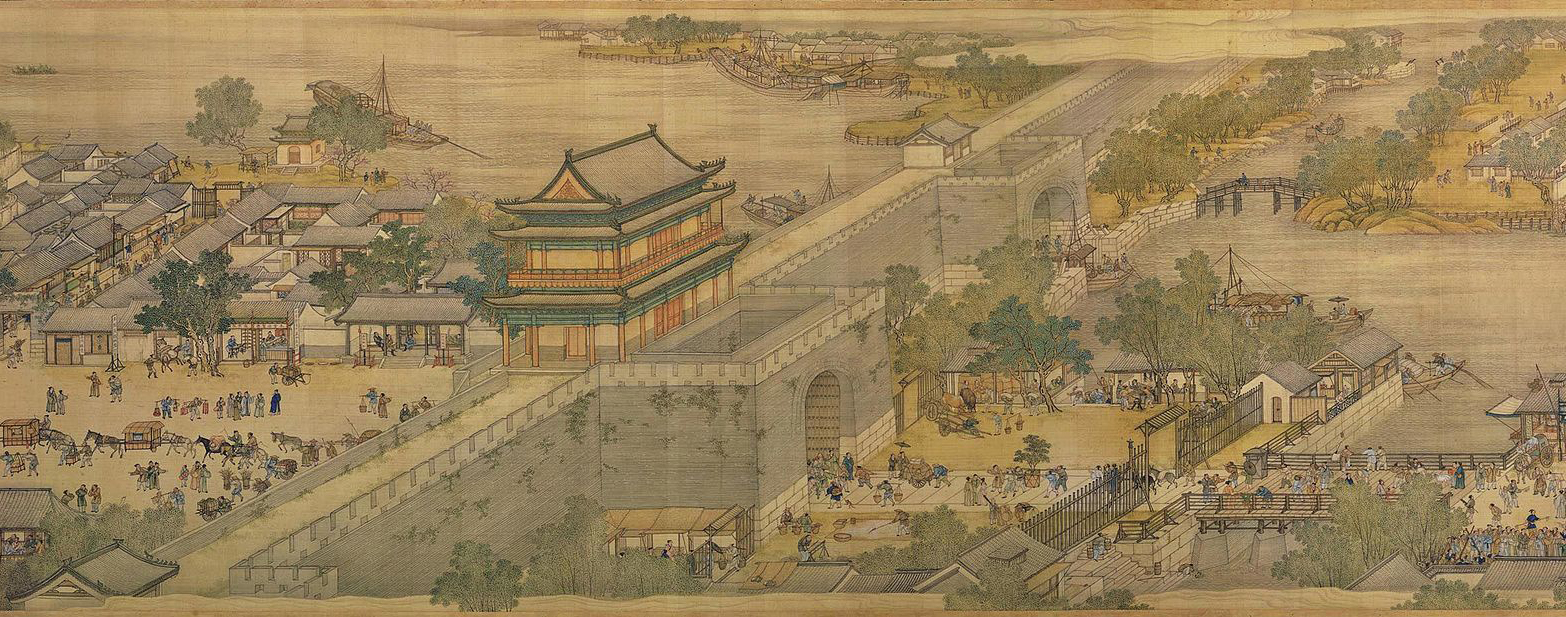
landscape design projectLimbo
BEng Thesis, Xi’an, 2014
This landscape design project aimed at representing the historical changes of Han Dynasty, through planning scenarios along with the main tourist route.
![]()
Limbo
BEng Thesis, Xi’an, 2014
This landscape design project aimed at representing the historical changes of Han Dynasty, through planning scenarios along with the main tourist route.


exhibition
Investigate It(格物)
curator assistant, OCAT, Shanghai, 03/2016
Through various forms of expression, including architectural models, installations, videos, images, and text, this exhibition carries on a dialogue between the “things” and spaces introduced in the workshop, but taking a more refined and mature approach.
Investigate It(格物)
curator assistant, OCAT, Shanghai, 03/2016
Through various forms of expression, including architectural models, installations, videos, images, and text, this exhibition carries on a dialogue between the “things” and spaces introduced in the workshop, but taking a more refined and mature approach.
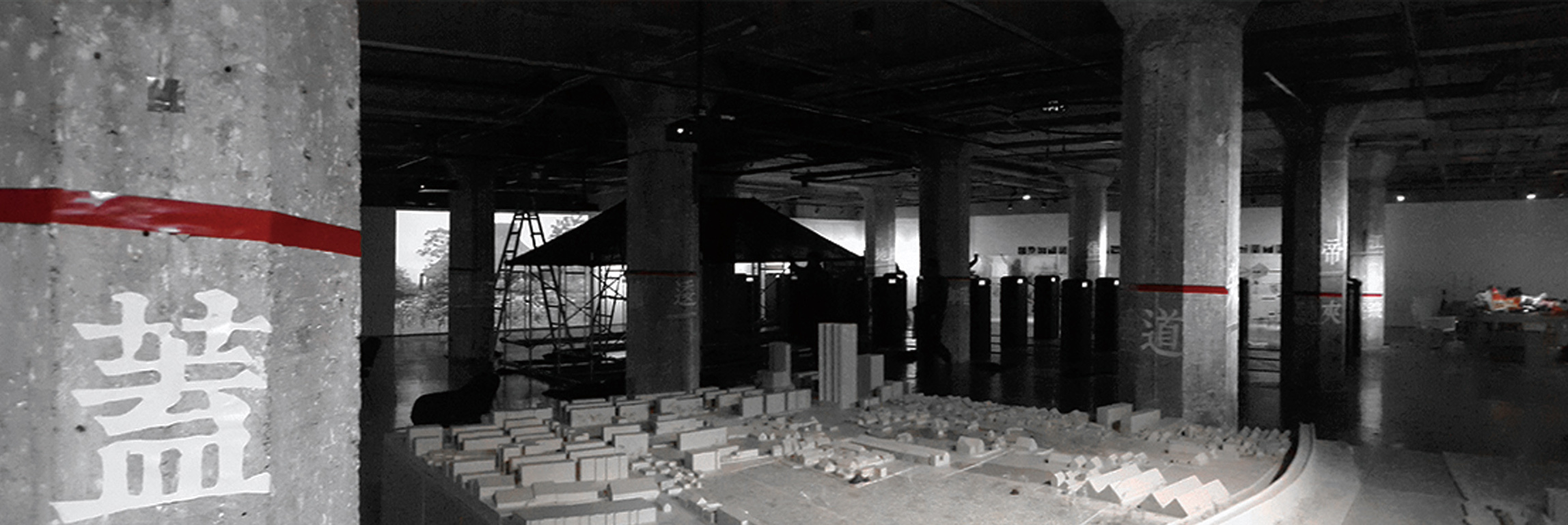
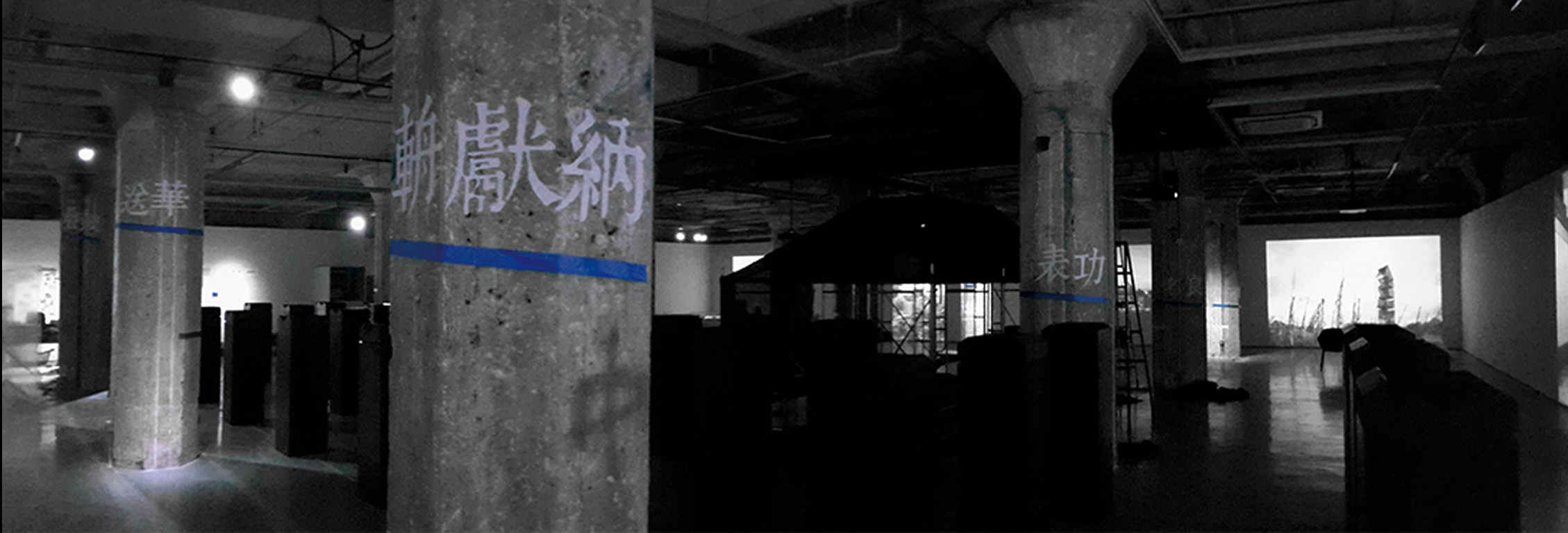

© 2022, All rights reserved..
